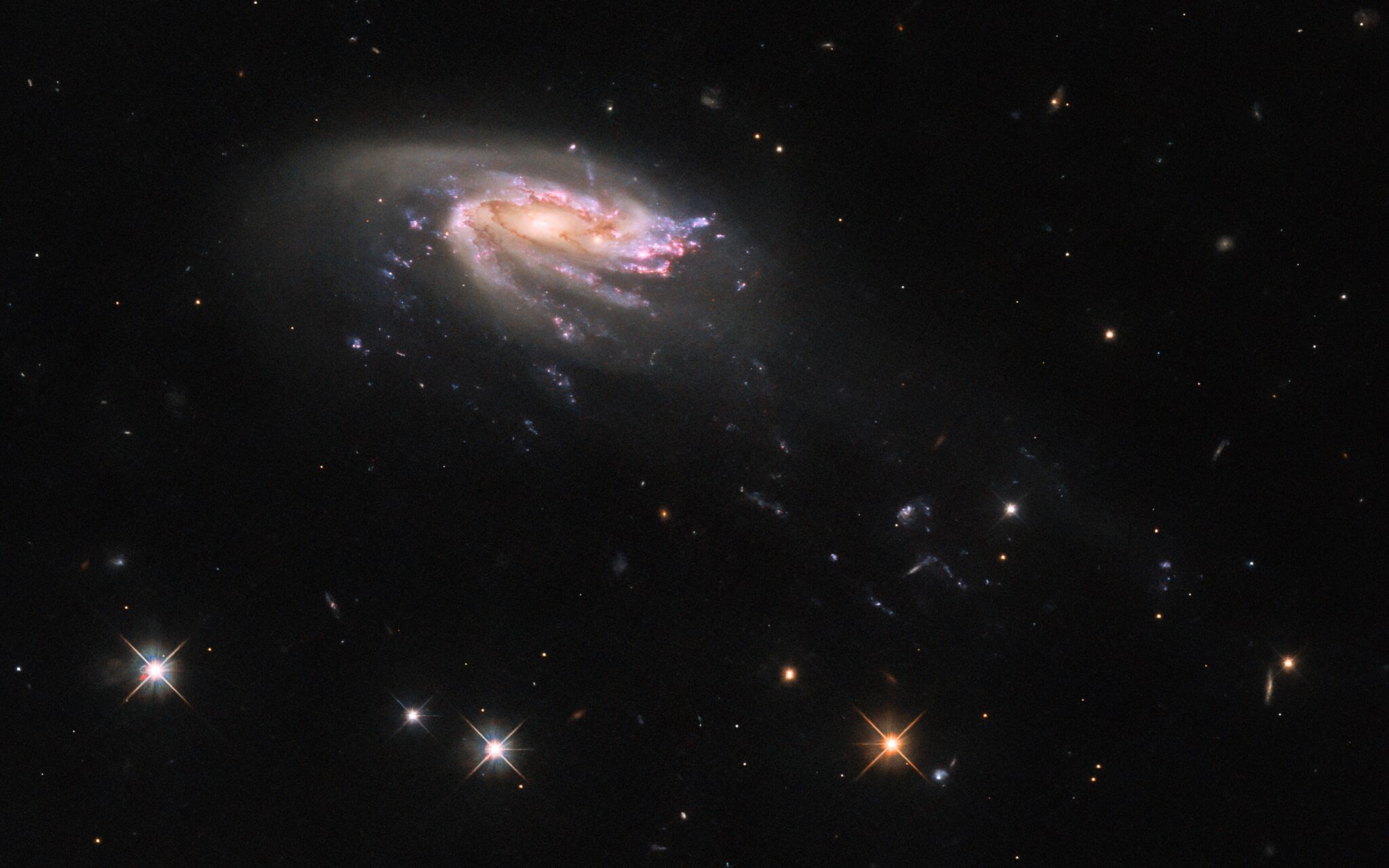This week’s image, captured by the Hubble Space Telescope, shows an unusual type of galaxy named after its aquatic counterpart, a jellyfish. The photo of the jellyfish galaxy JO206 was taken using the telescope’s wide-angle camera.

The galaxy is located at a distance of 700 million light-years from us, in the constellation Aquarius. The resulting image of the galaxy shows both the bright center of the galaxy and its long tentacles stretching to the lower right corner. It is thanks to these tentacles that the jellyfish galaxies get their name. Galactic tentacles are formed as a result of a process called “ram pressure relief”.
When a galaxy moves through a cluster of galaxies, it doesn’t just move through empty space. It moves through scattered clouds of plasma gas, which are called an intracluster medium, hotter than the surrounding space outside the cluster. When a galaxy moves through this medium, it creates a drag that pushes gas out of the galaxy and causes it to form a long tail stretching behind the main body of the galaxy. These tails are the tentacles of the jellyfish galaxy.
Hubble has previously recorded a number of other jellyfish galaxies, such as JO201 and JW100. The space telescope is often used to study these galaxies because of the high rate of star formation in their tails, as astronomers want to understand how star formation can differ when it occurs far from the center of the galaxy. But it turns out that this process is very similar, regardless of whether it occurs in the center of the jellyfish galaxy or on the edges of its tails.
“The “tentacles” of jellyfish galaxies give astronomers a unique opportunity to study star formation in extreme conditions, away from the influence of the main disk of the galaxy. Surprisingly, the telescope has found that there are no striking differences between star formation in the disks of jellyfish galaxies and star formation in their tentacles, which indicates that the environment of newly formed stars has only a minor influence on their formation,” Hubble scientists write.
Earlier we reported on how the Hubble telescope captured the Messier 85 galaxy.
According to NASA
Follow us on Twitter to get the most interesting space news in time
https://twitter.com/ust_magazine
